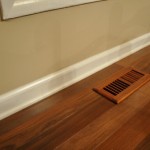How to Apply Surface Bonding Cement to Concrete Walls

A good surface bonding cement is often confused with stucco, although there are a few key differences. Surface bonding cement used on CMU or concrete walls includes fiberglass and an acrylic fortifier to add strength and flexibility. This product is also easier to work with than other concrete additives and adds water resistance to the wall.
Before beginning, you should make sure that the concrete wall that you will be working on is completely clean and in good repair. It is important to soak the concrete wall with water so that the surface bonding cement will not dry to quickly or unevenly. For this reason, you should work in sections, misting the wall with water, mixing the cement, and applying it.
Start at one edge of the concrete wall that has already been moistened with water. Mix the surface bonding cement according to the manufacturer’s instructions, creating a large enough batch for only about 25 feet of concrete wall area. Using a square end trowel, apply the cement using small upward strokes. You should aim for a depth of about an 1/8″ of surface bonding cement. Try to make the surface as smooth as possible with this initial application.
Once you have used the entire batch of surface bonding cement you have mixed, you should then use a wet trowel to smooth the area you have just applied completely. Use a different trowel for this purpose. You should wet the trowel and careful smooth the wall or otherwise create your preferred texture. Clean off the trowel and rewet it often so the wall remains easy to work with.
You should continue using these techniques until the entire concrete wall is covered with surface bonding cement. To finish the project, you should use a groover to cut vertical lines into the covered concrete wall to prevent random cracking while the surface bonding cement is still wet. These vertical lines, called control joints, should be spaced twice as far apart as the wall is tall. For example, a concrete wall that is three feet tall should have control joints spaced every six feet. If you would prefer a smaller space between cuts or your control joints would be awkwardly spaced on the concrete wall, feel free to make more control joints than are required. Lessening the amount of joints you cut could cause cracking, so try to meet the minimum amount for your concrete wall.
This simple project is an easy way to create a more attractive backyard while increasing the water resistance and durability of your concrete by adding surface bonding cement. Of course, this project requires some time to complete as well as patience to create a uniform finish. If you don’t have both of these things, call a professional who will be able to do the work for you.



